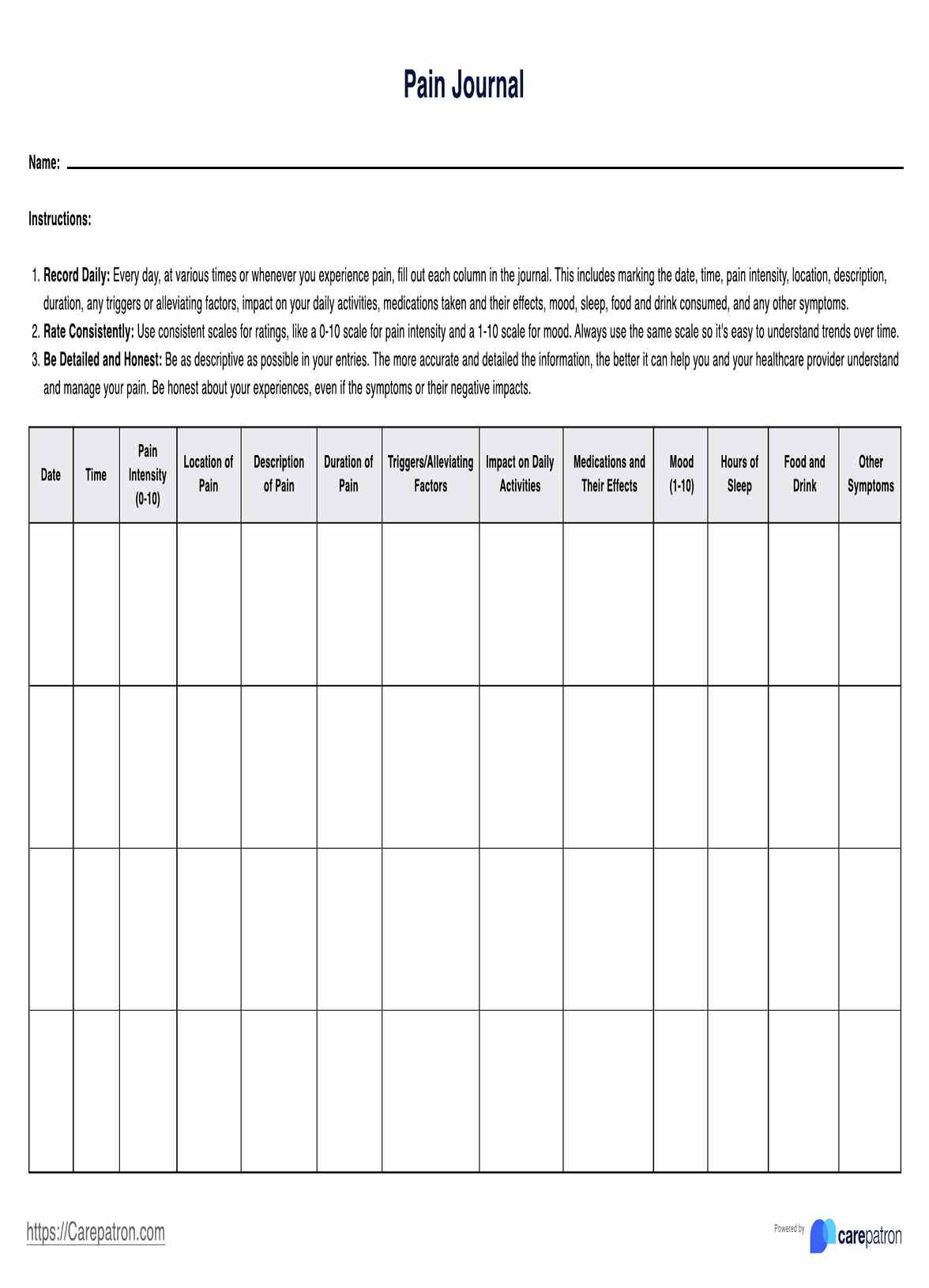Pain journals are predominantly used by individuals experiencing chronic pain and healthcare professionals, including doctors, physiotherapists, and psychologists, to understand better and manage the patient's pain experience.

Pain Journal
Discover how to effectively track and manage your pain with our comprehensive guide on Pain Journals. Download our PDF for free to elevate pain management and work towards improved health.
Pain Journal Template
Commonly asked questions
Pain journals can be stored physically or digitally. Physical journals should be kept in a safe and accessible place. Digital options, like the Carepatron Pain Software, offer easy storage, access, and editing capabilities.
A client or patient typically fills out the pain journal, providing details about their pain experiences. However, healthcare providers may assist or guide them in the process. The more open and detailed the entries, the more beneficial the journal is for pain management.
EHR and practice management software
Get started for free
*No credit card required
Free
$0/usd
Unlimited clients
Telehealth
1GB of storage
Client portal text
Automated billing and online payments











